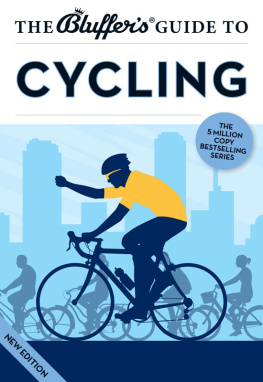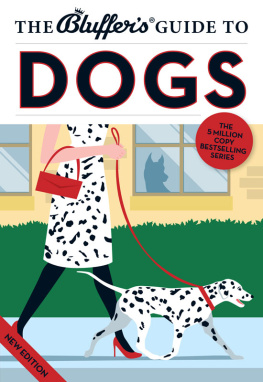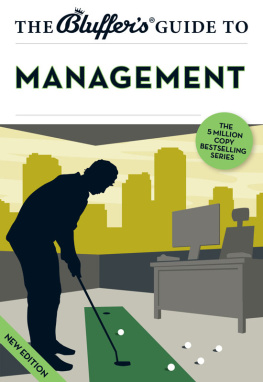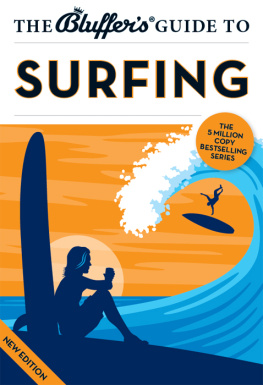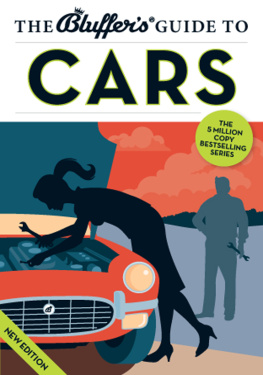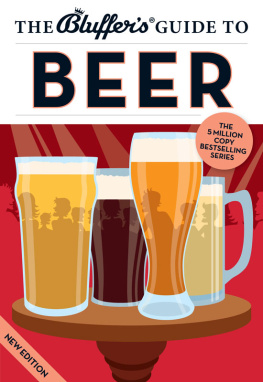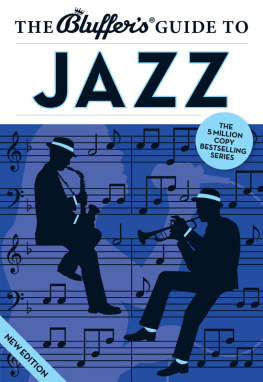

Colette House
52-55 Piccadilly
London W1J 0DX
United Kingdom
Email:
Website: bluffers.com
Twitter:
Published 2013
Copyright Bluffers 2013
Publisher: Thomas Drewry
Publishing Director: Brooke McDonald
Series Editor: David Allsop
Design and Illustration by Jim Shannon
All rights reserved. No part of this publication
may be reproduced, stored in a retrieval system
or transmitted in any form or by any means, electronic,
mechanical, photocopying, recording or otherwise,
without the prior permission of Bluffers.
A CIP Catalogue record for this book
is available from the British Library.
Bluffers Guide, Bluffers and Bluff Your Way
are registered trademarks.
| ISBN: | 978-1-909365-40-7 (print)
978-1-909365-41-4 (ePub)
978-1-909365-42-1 |

Tell a non-cyclist you ride a bike and they assume you must be fit, sustainable, resourceful and self-reliant.

L ike a retro music artist rediscovered after decades out of fashion, cycling is suddenly cool again.
From hip ad campaigns to mundane council leaflets, were bombarded with images of happy people on bikes. Briefcase-toting commuters eager to get to work; carefree families bonding on a rail trail (see Glossary, ); racing pelotons cresting a mountain pass; flowing-haired young women in summer frocks with a puppy in their front basket...
The reality is often different: mending your second puncture on a windy November night on the bypass; being cut up repeatedly by the same bus; getting thrown off a train because your reserved bike space is blocked by a hen partys airline baggage.
Cyclists know this. Tell them you ride a bike and they will welcome you as a fellow chosen one a member of the special people who knows about quality of life, and who wont harangue them about jumping red lights, or cycling on pavements, or road tax. But non-cyclists dont know this. Tell them you ride a bike and they assume you must be fit, sustainable, resourceful and self-reliant.
Theyre instantly on the defensive, burbling excuses about needing their car because they live so far away. And they have to live so far away because nowhere else has parking. They know they should use their bike but it has a flat tyre. And theres a hill.
With all those media images in mind, theyre envious of, and a little intimidated by, the vibrant, sociable and healthy lifestyle they presume you must have.
Riding a bike is great. It saves temper, time and money. You glide past traffic queues, arrive early feeling fit, and get 300 miles per gallon of coffee. It puts you in direct control of your resources.
Bluffing about it is even better, because it puts you in control of other people. And thats what being a bluffer is all about.
This short guide sets out to conduct you through the main danger zones encountered in discussions about cycling, and to equip you with a vocabulary and evasive technique that will minimise the risk of being rumbled as a bluffer. It will give you a few easy-to-learn hints and techniques that might even allow you to be accepted as a cyclist of rare knowledge and experience. But it will do more. It will give you the tools to impress legions of marvelling listeners with your wisdom and insight without anyone discovering that until you read it you probably didnt know the difference between a velocipede and a centipede.
N o one country, let alone one person, invented the bike, which evolved from the collective efforts of many people. But that hasnt stopped various people claiming otherwise, through bicycle creation myths.
As with regular history, the way to sound knowledgeable is to wait for people to make some assertion. Then, you rebut what theyve said as commonly held myth, very misleading, or, at the very least, I think youll find its not as simple as it looks (a good fallback position that can be used for pretty much everything, except perhaps daytime TV).
The most surprising thing about bikes is how early all the technology familiar on modern machines was in place. The Rover safety bicycle of 1885 looks very much like a modern town bike (it even had mudguards though it would handle rather differently, as youd soon find out when trying to brake going downhill).
MYTH: DA VINCI DESIGNED A BICYCLE
In Leonardo Da Vincis notebook Codex Atlanticus, theres a drawing resembling a nineteenth-century velocipede with the addition of a startlingly prescient chain and pedals. Its sometimes credited to Leonardos pupil Gian Giacomo Caprotti, circa 1493, but overwhelming scholarly opinion now is that its a forgery. Profess amazement that so many were taken in by a patently anachronistic fake: Didnt the writing on the frame, RALEIGH MADE IN NOTTINGHAM, give it away?. (Ideally, the other person will refer to da Vinci, which you can correct to Leonardo surnames hadnt yet caught on in fifteenth-century rural Italy. Calling him da Vinci, you can say, is like referring to John of Gaunt as Mr Of Gaunt.)
MYTH: STOKE POGES CHURCH HAS A SEVENTEENTH-CENTURY BICYCLE WINDOW
St Giles Church in Stoke Poges, Buckinghamshire, has a stained glass window dating from 1643 which shows an angel apparently riding a prototype hobbyhorse (see below). In fact, its only a one-wheeled contraption of a sort that cherubim, seraphim and angelim are often shown sitting on in stained glass windowim; a curve at the back, largely hidden by a strut, misleads the modern eye into thinking theres a back wheel somewhere.
That said, the angel is stark naked and blowing a trumpet, which is spookily predictive of the annual fleshfest that is the World Naked Bike Ride.
MILESTONE:
DRAIS INVENTED THE HOBBYHORSE
The first practical two-wheeled personal transport mode. Between 1817 and 1819, the laufmaschine, or velocipede, or draisine, or draisienne, developed by Baron Karl von Drais of Germany, was all the rage. Though pedal-less riders used their feet to scoot along it established several things we now think of as essential to the bicycle: two in-line wheels, the front being steerable; the rider sitting on a platform in between the wheels; and most important, pavement cycling, which became such a menace to pedestrians that it led to the first laws banishing bicycles from footways, in 1835. It was around the time of Draiss invention that the word velocipede really caught on as a generic term for describing a human-powered land vehicle with two wheels.
If someone calls Draiss version a hobbyhorse, furrow your brow and point out that this particular term came in when Denis Johnson, a London coachmaker, tweaked the draisienne, calling it a pedestrian curricle, though the public preferred hobbyhorse or dandyhorse. This established another bicycle essential: a eurobabel where every language has a different word for each cycling term.
On 12 June 1817, Drais took the very first bike ride in the world. He covered eight miles from Mannheim in just under an hour. Presumably the first instance of a cab driver shouting that the cyclist should pay road tax happened the same day.
Sadly, the sheer discomfort of Draiss machine meant that most people bought it in a flush of enthusiasm, rode it a couple of times, then with sore behinds and aching legs chucked it to the back of the shed. Another bicycle essential established.
Next page
